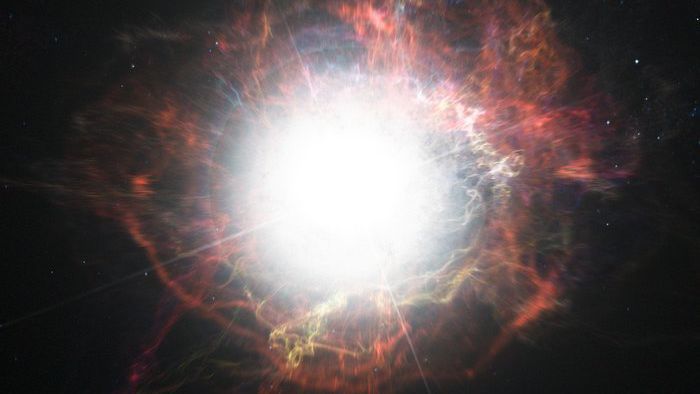The supernova class called “Cow” has just received a new member. Dubbed “AT2020mrf”, the new event is the fifth to join the class and is considered the brightest observed to date. It is possible that the newly discovered supernova, like the others in the category, is powered by some extreme object, such as a black hole in formation or even a neutron star.
Cow supernovae represent a new class of supernovae, considered the final stage in the life of giant stars. When they run out of fuel to carry out the nuclear fusion that sustains their structures, they collapse and trigger supernovas, powerful explosions considered some of the brightest events in the universe. Depending on the size of the original star, the explosion can form a black hole or a neutron star.
In the case of Cow supernovae, they are even brighter than ordinary supernovae. Scientists suspect that their difference is due to object activity in their centers, which would be a kind of “internal engine” and release large amounts of highly energetic X-rays. “We can look at the heart of these explosions to directly witness the birth of black holes and neutron stars,” explained Yuhan Yao, a graduate student and lead author of the new study.
Want to stay on top of the best tech news of the day? Access and subscribe to our new youtube channel, Kenyannews News. Every day a summary of the main news from the tech world for you!
Inside the Cow supernovae
The first supernova of the class was identified in 2018 and was named AT2018cow – so the name “Cow” does not refer to the animal (“cow”, in Portuguese), but to the randomly generated letters at the end of the designation. The event surprised astronomers: in addition to being 10 times brighter in visible light than typical supernovae, it released a large amount of variable X-rays and quickly disappeared.
The most recent event was called “AT2020mrf” and was discovered in July 2020. This was the fifth supernova of the class discovered since 2018, and also the first initially observed in X-rays, rather than visible light. Observations by the eROSITA spacecraft showed the explosion was 20 times brighter than the 2018 event, and data from the Chandra telescope showed it emitted 200 times more X-rays than the original event.
Yao was surprised by the characteristics of the event. “I’ve re-analyzed it a few times, and this is the brightest Cow supernova ever seen in X-rays,” she said. According to the author, the large amount of energy released, added to the rapid variability of X-rays, shows that there is a magnetar or a very active black hole feeding this supernova. According to her, it is still not known exactly why the central engines of these events are so active.
One possible explanation involves the type of star that formed them, which must have caused something other than ordinary explosions. As this event was not exactly like the others observed before, Yao considers that the Cow class is even more diverse than previously thought. “Finding more members of this class will help us to restrict their energy source,” he concluded.
The paper with the results of the study has been submitted for publication in The Astrophysical Journal and can be accessed in the arXiv repository, without peer review.
